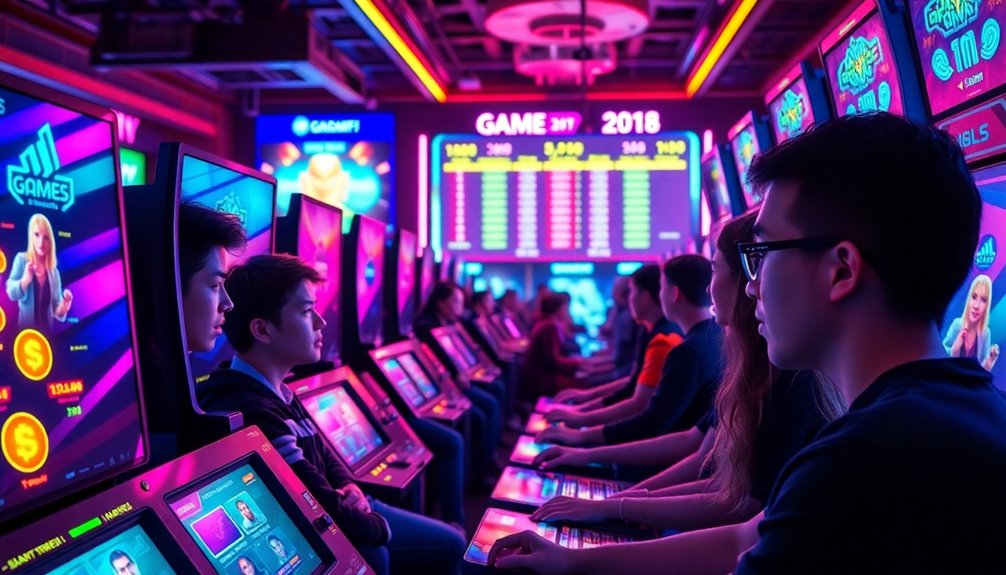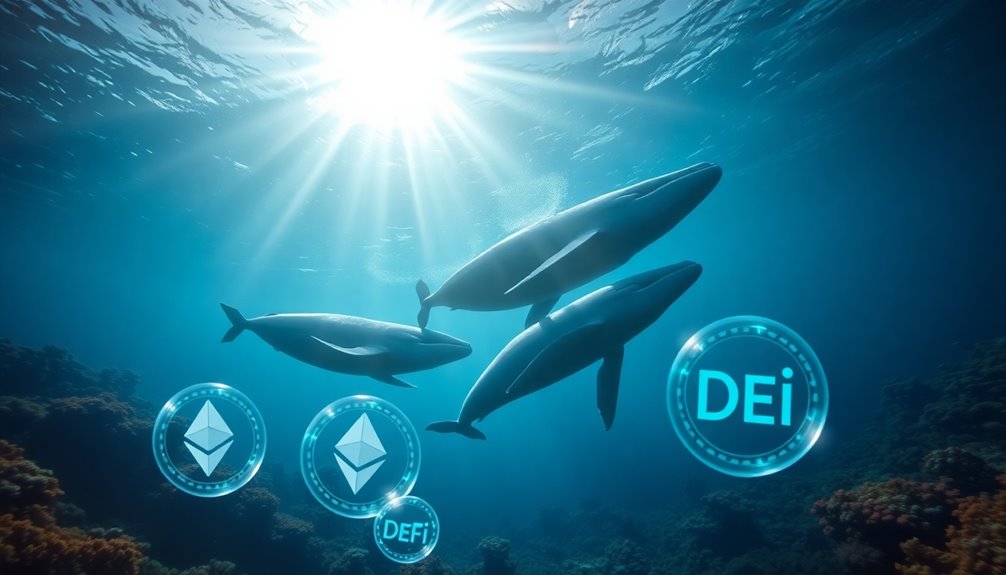GameFi is transforming the gaming landscape, offering you real opportunities to earn substantial paychecks through blockchain technology. With play-to-earn models, players can convert their gaming skills into cryptocurrencies and NFTs, enhancing the value of unique in-game assets. Daily active participants have soared from 63,000 to over 1 million, reflecting immense interest. While the potential to earn thousands monthly excites many, it's essential to understand the inherent risks, such as market volatility and security concerns. As the GameFi sector grows, so do the prospects for smart players. Explore how you can navigate this booming market effectively.
Key Takeaways
- GameFi allows players to earn real-world value through play-to-earn models, offering significant potential for monthly income.
- Digital assets like NFTs enable players to trade unique in-game items, enhancing their value and ownership.
- Blockchain technology ensures transparent and secure transactions, boosting confidence in the GameFi ecosystem.
- Engaging with community governance allows players to influence game development and investment decisions.
- The GameFi market is projected to grow significantly, with institutional investments signaling a robust future for blockchain gaming.
What Is Gamefi?

As the gaming landscape evolves, GameFi stands out by merging the excitement of gaming with the financial opportunities of blockchain technology. At its core, GameFi represents a new paradigm in blockchain gaming, allowing players to earn real-world value through innovative play-to-earn models. With these models, you're not just playing for fun; you're engaging in activities that can generate genuine financial incentives.
GameFi platforms enable you to own digital assets, such as unique in-game items that are represented as non-fungible tokens (NFTs). These assets can be traded or sold, creating potential revenue streams that traditional gaming simply can't offer. In-game transactions become a way to build wealth rather than just a means to enhance your gaming experience.
Utilizing the Ethereum blockchain, GameFi enhances transparency and security, making your digital assets truly yours. The surge in daily active gamers—from 63,000 to over 1 million in just a year—underscores the growing interest in this sector. As you join the gaming community, you're not just playing; you're participating in a financial revolution that could reshape the future of gaming. Embrace the GameFi boom and discover the possibilities that await!
Key Components of GameFi
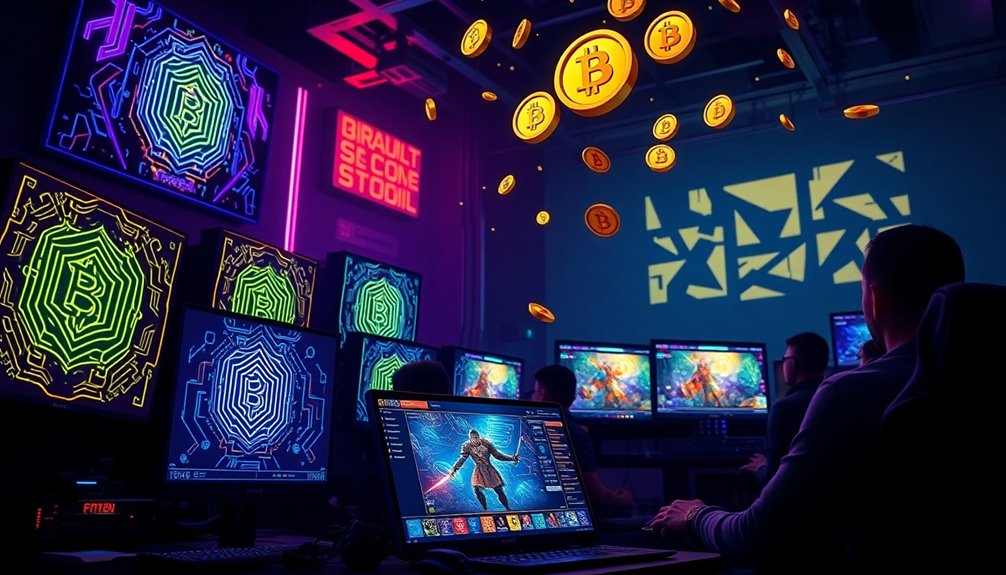
GameFi consistently combines gaming and financial elements, creating a unique ecosystem where players can earn real-world value through their gameplay. One of the key components is the integration of Play-to-Earn (P2E) models, which reward participants with cryptocurrencies and NFTs for their in-game achievements. This shift allows players to transform their gaming efforts into tangible assets.
At the core of GameFi is blockchain technology, ensuring transparency and security through smart contracts that automate transactions. These smart contracts streamline processes, reducing the risk of fraud and enhancing player trust. NFTs represent unique in-game assets, such as characters or weapons, empowering players to own, trade, and monetize items on digital marketplaces. This ownership model contrasts sharply with traditional gaming, where players often lack true asset control.
Moreover, GameFi encourages community governance, allowing players to participate in decision-making processes. This democratic approach fosters a deeper sense of involvement. Additionally, the incorporation of decentralized finance (DeFi) opens doors for further earning opportunities through staking, lending, and farming. Together, these components create a dynamic landscape where players can engage, earn, and thrive in a new era of gaming.
Benefits for Players

In the realm of GameFi, players enjoy a range of benefits that elevate their gaming experience beyond traditional models. With the Play-to-Earn (P2E) model, you can earn real-world value through gameplay, receiving cryptocurrencies and NFTs as rewards. This innovative approach allows you to monetize your skills and achievements significantly, with some players reporting earnings exceeding several thousand dollars monthly.
Ownership of unique in-game items as NFTs gives you the power to trade, sell, and retain value in your assets. This not only creates opportunities for real income generation but also enhances your overall gaming experience. Moreover, GameFi promotes community governance, enabling you to influence game development and decision-making processes, which fosters a deeper investment in the game's future.
Additionally, revenue streams from Revenue Guilds distribute returns to active players and token holders, encouraging community involvement and increasing engagement within the GameFi ecosystem. As blockchain-based games continue to evolve, the potential benefits for players like you are immense. By participating in this dynamic environment, you can enjoy a gaming experience that rewards your time and effort in ways never before imagined.
Getting Started With Gamefi

How can you dive into the exciting world of GameFi? First, you'll need to create a crypto wallet to facilitate secure transactions and manage your in-game assets. This wallet will be essential for engaging with various GameFi projects, especially when earning in-game tokens or NFTs.
Next, familiarize yourself with the game rules and the investment risks associated with these digital assets. Understanding the unique economic models behind different projects will help you navigate the GameFi ecosystem effectively. Many games utilize play-to-earn mechanics, providing financial incentives that allow you to monetize your gaming experience.
It's essential to approach this landscape cautiously. Avoid scams and unverified websites to ensure your participation is safe and informed. Engaging with reputable platforms can also enhance your ability to participate in community governance, giving you a voice in the game's development.
Risks and Rewards of GameFi
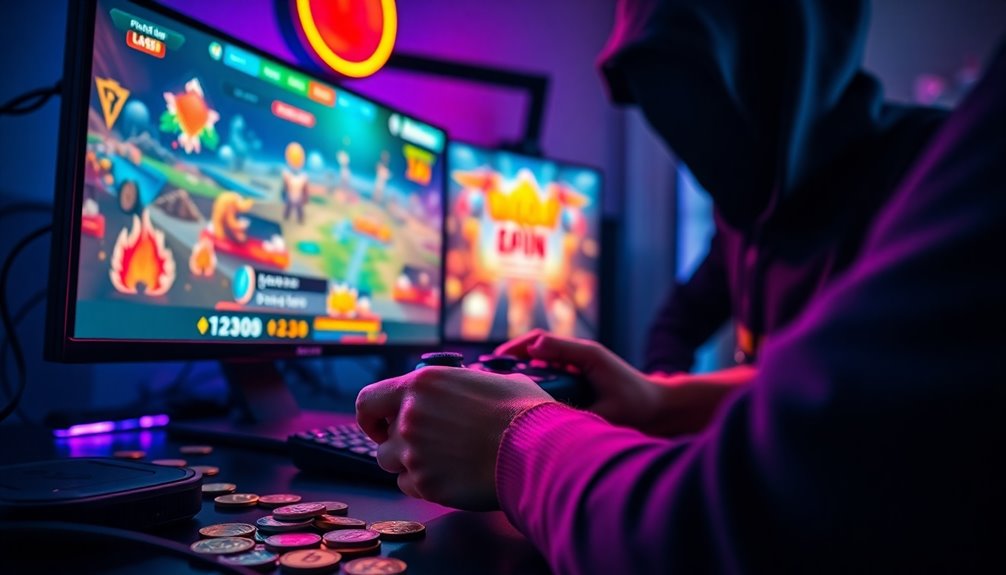
Navigating the world of GameFi can be both exhilarating and daunting, as players face a landscape filled with enticing rewards and potential pitfalls. The Play-to-Earn (P2E) model allows you to earn cryptocurrencies and NFTs, monetizing your gaming skills in ways traditional gaming never could. However, with these rewards come significant risks.
Market volatility can cause the value of your in-game assets to fluctuate dramatically, influenced not just by the game's popularity but also by broader market conditions. Additionally, the lack of regulatory bodies in the GameFi space can lead to legal challenges, making it crucial for you to stay informed about the evolving landscape.
Security concerns are another aspect to consider; historical hacks on GameFi platforms highlight the need for using secure wallets and reputable games to protect your investments. Despite these risks, the GameFi sector has shown rapid growth, boasting a compound annual growth rate (CAGR) of 180% from 2018 to 2022, which has attracted significant investor interest. Understanding these risks and rewards will empower you to make informed decisions in this exciting yet unpredictable arena. Furthermore, the integration of machine learning tools can enhance security measures and improve user experience in GameFi platforms.
The Future of GameFi
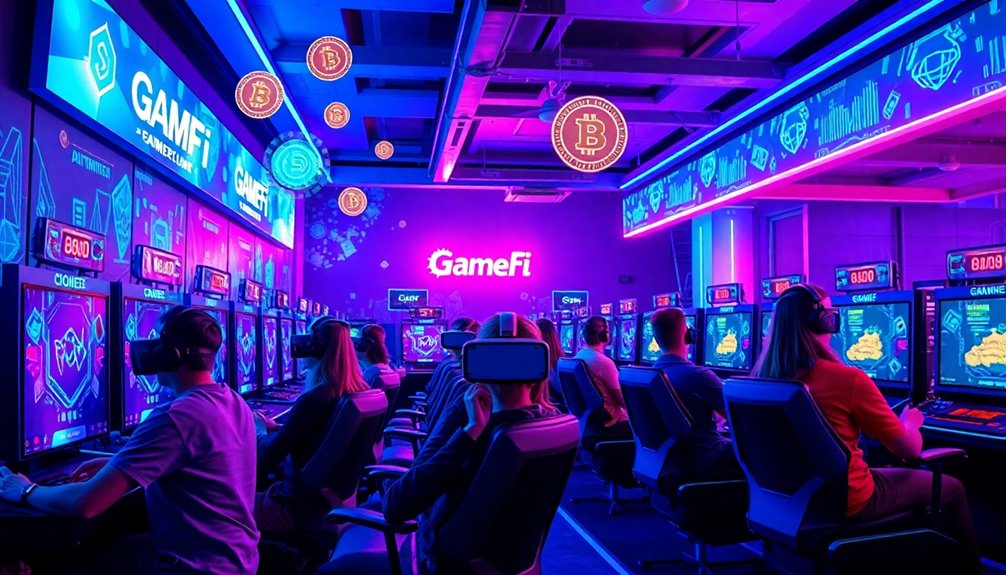
As the GameFi landscape continues to evolve, players can look forward to a future rich with opportunities and innovations. The sector is projected to reach a remarkable market size of $38 billion by 2025, driven by surging player engagement and investments in blockchain gaming. With over 400 blockchain-enabled games already developed, the GameFi ecosystem is rapidly expanding, offering diverse experiences that blend entertainment with financial rewards.
The shift from traditional play-to-earn models to a focus on high-quality AAA games signifies a new era in GameFi. Players are increasingly prioritizing engaging gameplay over mere financial incentives, which could lead to deeper player engagement and satisfaction. As the blockchain gaming industry grows at an impressive compound annual growth rate of 68.3% from 2023 to 2030, the demand for digital assets and crypto assets will only increase.
Institutional interest is also on the rise, with over $500 million invested in Q3 2024, indicating a commitment to sustainable and enjoyable gaming experiences. The next generation of GameFi is set to redefine how you interact with games, blending entertainment with potential financial benefits in ways we've yet to fully explore.
Frequently Asked Questions
What Is the Future of Gamefi?
The future of GameFi looks promising, with rapid growth projected in both player engagement and investment. As you explore this evolving landscape, you'll notice an increasing number of blockchain games, each offering unique experiences. The anticipated market expansion suggests that opportunities for profit will grow, making it an attractive space for both players and investors. However, staying informed about trends and developments is crucial to navigate potential risks and rewards effectively.
What Is the Prediction for Blockchain Gaming?
The prediction for blockchain gaming looks promising, as it's set to grow rapidly over the next few years. With daily active players soaring past one million and a significant market cap increase, more investments are flowing in. The shift towards AAA-quality games is likely to enhance player engagement, moving beyond the Play-to-Earn model. As institutional interest rises, you'll want to keep an eye on this evolving landscape, which could redefine gaming's financial opportunities.
Can You Make Money From Gamefi?
Yes, you can make money from GameFi. Through the Play-to-Earn model, you earn cryptocurrencies and NFTs by achieving in-game milestones. Successful players in games like Axie Infinity have reported monthly earnings in the thousands, showcasing the potential for substantial income. Additionally, many GameFi platforms allow you to stake tokens for extra rewards, further enhancing your earnings. With over 400 blockchain games available, you've got plenty of opportunities to monetize your skills.
Which Blockchain Is Best for Gaming?
When considering which blockchain is best for gaming, Ethereum stands out for its robust infrastructure and smart contract capabilities. However, if you prefer lower fees and faster speeds, Binance Smart Chain is a strong alternative. For scalable applications, Polygon offers a cost-effective Layer 2 solution. Meanwhile, Solana’s high throughput enhances real-time interactions, making it appealing. Lastly, Flow specializes in user-friendly experiences tailored for games and digital collectibles, attracting developers and players alike. In addition, for those concerned with privacy and security, the Phala Network collaboration provides a decentralized and secure infrastructure for gaming applications. This allows for the protection of sensitive user data and the prevention of unauthorized access. By considering these options, developers and gamers can leverage the strengths of each blockchain to create innovative and engaging gaming experiences.
